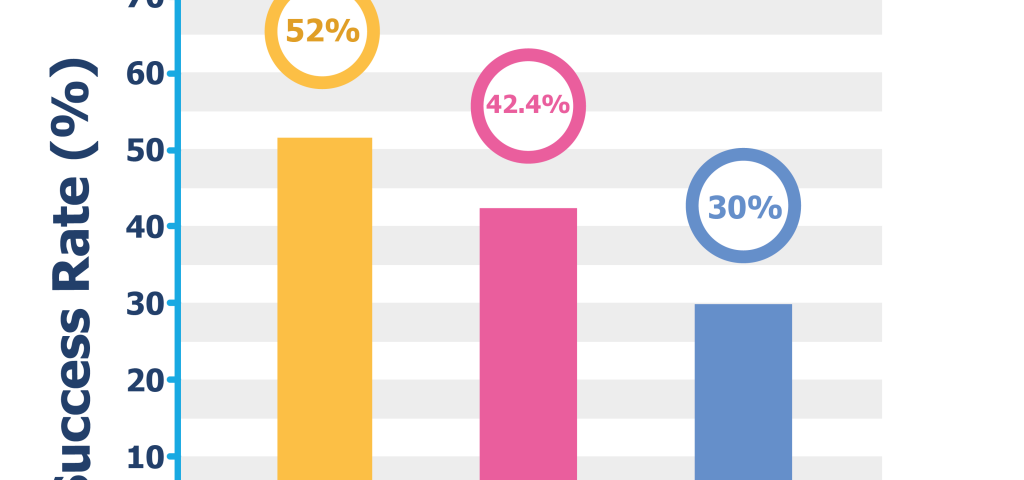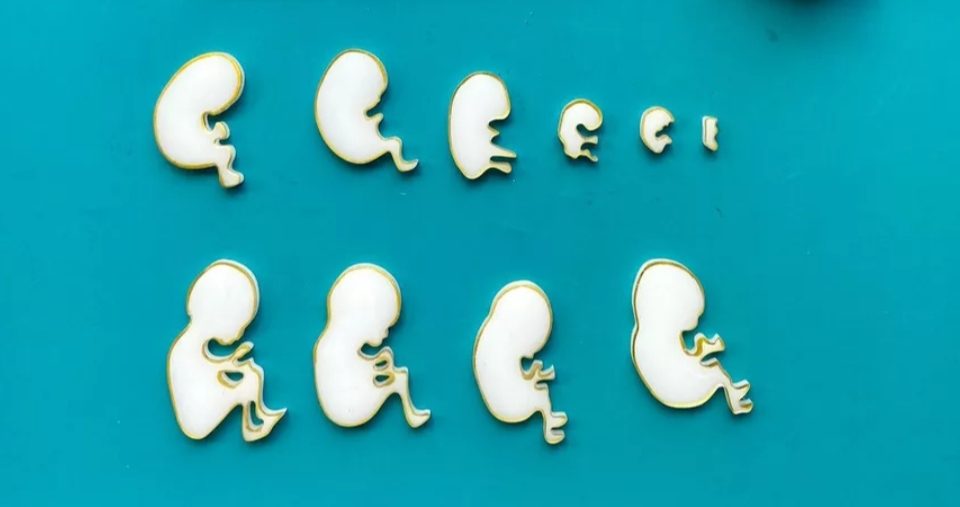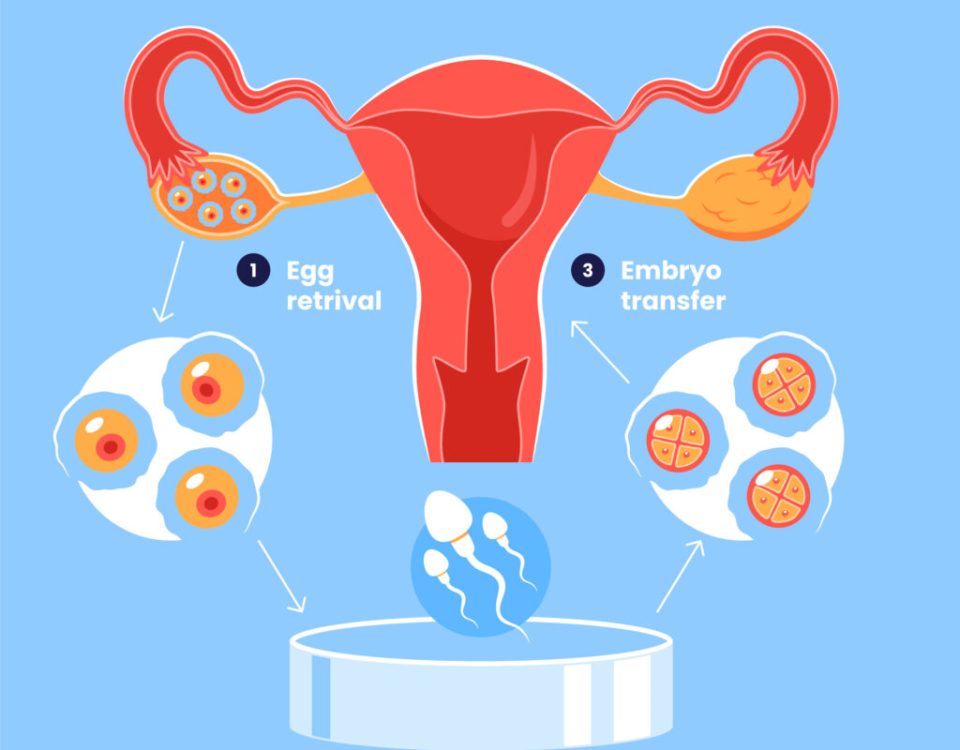
What Was in the IVF Bill? A Deep Dive into the Fight for Fertility Rights
April 16, 2025
Can IVF Cause Cancer? Unpacking the Science, Myths, and What You Need to Know
April 17, 2025What Is the Success Rate of IVF?
In vitro fertilization (IVF) has been a game-changer for millions of people dreaming of starting a family. If you’re reading this, chances are you’re curious about how often IVF actually works. Maybe you’re thinking about trying it yourself, or maybe you’re just fascinated by the science behind it. Either way, you’re in the right place! IVF success rates can feel like a puzzle—there’s no one-size-fits-all answer—but by the end of this article, you’ll have a clear picture of what to expect, why it varies, and how you can boost your odds. Let’s dive into the world of IVF and uncover the numbers, the science, and the stories behind this incredible process.
Understanding IVF: A Quick Rundown
IVF is like a high-tech helping hand for conception. It’s a process where doctors take eggs from a woman’s ovaries, mix them with sperm in a lab, and then place the resulting embryo back into the uterus, hoping it’ll grow into a baby. It sounds simple, but there’s a lot going on behind the scenes—hormone shots, precise timing, and a team of experts working together.
Since the first IVF baby, Louise Brown, was born in 1978, the technology has come a long way. Today, it’s used for all sorts of reasons: blocked fallopian tubes, low sperm count, or even when there’s no clear explanation for infertility. Over 10 million babies have been born through IVF worldwide, and in the U.S. alone, it accounts for about 2.5% of all births each year. Pretty amazing, right?
But here’s the big question: how often does it work? The success rate isn’t a single number—it depends on a bunch of factors like age, health, and even luck. Let’s break it down step by step.
The Big Picture: What Does “Success” Mean in IVF?
When we talk about IVF success, we usually mean one thing: a live birth. That’s the ultimate goal—a healthy baby in your arms. But success can also be measured in smaller steps, like getting a positive pregnancy test or having an embryo implant in the uterus. For this article, we’ll focus on live birth rates because that’s what most people care about when they start this journey.
The American Society for Reproductive Medicine (ASRM) and the Centers for Disease Control and Prevention (CDC) track IVF outcomes every year. According to their latest data, the average success rate per cycle hovers around 25-30% for women under 35. That means if 100 women start an IVF cycle, about 25 to 30 of them will end up with a baby. But here’s the catch: that number changes a lot depending on your situation. Age is the biggest player, but it’s not the only one. Let’s dig into the details.
Age: The Biggest Factor in IVF Success
Your age is like the quarterback of the IVF team—it calls the shots. Women’s fertility naturally declines as they get older, mostly because the number and quality of eggs drop over time. IVF can’t make more eggs or turn back the clock, but it can maximize what you’ve got. Here’s how success rates stack up by age, based on CDC data from 2021:
- Under 35: Around 50-55% chance of a live birth per cycle.
- 35-37: Drops to about 40%.
- 38-40: Around 25-30%.
- 41-42: Down to 15%.
- Over 42: Less than 5% with your own eggs.
Why such a big difference? Younger eggs are more likely to fertilize, develop into healthy embryos, and implant successfully. After 35, the odds of chromosomal issues—like Down syndrome—go up, which can lead to miscarriage or failed cycles. For women over 40, using donor eggs (usually from someone in their 20s) can bump the success rate back up to 50% or more. It’s a tough reality, but it’s not the whole story—other factors can tip the scales too.
What This Means for You
If you’re under 35, your chances are pretty solid, especially with a good clinic. Over 40? Don’t lose hope—donor eggs or extra cycles might be your ace in the hole. Talk to your doctor about what’s realistic for your age and body.
Beyond Age: What Else Affects IVF Success?
Age might be the star of the show, but it’s not the only actor on stage. Here are some other big players that can sway your IVF outcome:
Your Health and Lifestyle
Your body is the foundation for IVF success. Things like weight, smoking, and stress can make a difference. For example:
- Weight: Being overweight or underweight can mess with hormone levels. Studies show women with a BMI between 19 and 30 have better odds—up to 10% higher—than those outside that range.
- Smoking: It’s a fertility killer. Smokers have a 20% lower success rate per cycle, according to research from the ASRM.
- Stress: It’s hard to avoid, but high stress can lower your chances by affecting hormone balance. One study found women who did relaxation techniques had a 15% higher pregnancy rate.
The Cause of Infertility
Why you’re doing IVF matters too. If it’s because of blocked tubes, your odds might be higher than if it’s unexplained infertility or severe male factor issues (like low sperm count). For instance:
- Endometriosis: Women with mild cases have about a 30% success rate, but severe cases drop to 20% or less.
- Male Factor: If sperm quality is poor, a technique called ICSI (where sperm is injected directly into the egg) can boost success by 10-15%.
The Clinic and Technology
Not all IVF clinics are created equal. Some have success rates 10-20% above the national average thanks to better labs, experienced staff, or cutting-edge tools like embryo screening. The CDC’s online IVF Success Estimator can give you a personalized estimate based on your clinic’s track record.
Number of Cycles
One cycle isn’t always enough. About 65% of women who keep trying for three cycles end up with a baby, even if the first one fails. Persistence pays off, but it’s a big emotional and financial commitment.
Fresh vs. Frozen Embryos: Does It Matter?
Here’s something you might not have thought about: whether the embryo is fresh or frozen can affect your chances. A fresh cycle uses embryos right after they’re made, while a frozen cycle stores them for later. Which is better? It depends.
- Fresh Embryos: Historically, these had a slight edge—around 35% success for women under 35. But they require perfect timing with your body’s hormones, which can be tricky.
- Frozen Embryos: These have caught up fast. A 2023 study in the Journal of Assisted Reproduction found frozen embryo transfers hit 40% success rates for younger women, thanks to better freezing tech (called vitrification). Plus, you can wait until your body’s in top shape.
Tip: If you’re worried about timing or have extra embryos, freezing might give you more flexibility and a better shot down the road.
The Emotional Side: What the Numbers Don’t Tell You
Stats are great, but they don’t capture the rollercoaster of IVF. One cycle might fail, and you feel crushed—then the next one works, and it’s pure joy. Take Sarah, a 38-year-old teacher I heard about through a friend. After two failed cycles, she was ready to give up. Her doctor suggested tweaking her meds and using a frozen embryo. Third time was the charm—she’s now mom to a spunky toddler.
The point? Numbers give you a map, but your journey is unique. About 50% of couples don’t succeed on the first try, but many keep going and win. It’s tough, but you’re not alone—support groups and counseling can make a huge difference.
Quick Poll: How Do You Cope?
What keeps you going during IVF? Pick one and share in the comments:
- A. Talking to friends or family
- B. Joining an online community
- C. Leaning on your partner
- D. Something else (tell us!)
Boosting Your Odds: Practical Tips You Can Use
IVF isn’t all up to chance—you’ve got some control. Here’s how to stack the deck in your favor:
Before You Start
- ✔️ Get Healthy: Aim for a balanced diet with lots of veggies, lean protein, and healthy fats. One study showed women who ate more Mediterranean-style foods had a 10% higher success rate.
- ✔️ Cut the Bad Stuff: Quit smoking and limit alcohol. Even one drink a day can drop your odds by 5%.
- ❌ Don’t Overdo Caffeine: More than two cups of coffee daily might lower your chances by 7%, per a 2022 study.
During Treatment
- ✔️ Follow the Plan: Take your meds exactly as prescribed—timing is everything.
- ✔️ Rest Up: Sleep 7-8 hours a night. Poor sleep can mess with hormones and cut success by 10%.
- ❌ Avoid Stress Overload: Skip the all-nighters at work if you can.
After Transfer
- ✔️ Take It Easy: Rest for a day or two, but don’t stay in bed all week—light activity is fine.
- ❌ Don’t Test Too Early: Home pregnancy tests can give false results before the official blood test.
The Latest Research: What’s New in 2025?
IVF isn’t standing still—science is pushing the boundaries every year. Here are three breakthroughs from 2024-2025 that could change the game:
AI-Powered Embryo Selection
Artificial intelligence is now helping doctors pick the best embryos. A 2024 study from Stanford found AI boosted success rates by 15% compared to human selection alone. It analyzes tiny details—like how fast an embryo divides—that the naked eye might miss.
Lab-Grown Eggs
Imagine making eggs from your skin cells. It’s called in vitro gametogenesis (IVG), and while it’s still experimental, Japanese researchers created mouse pups this way in 2023. Human trials are years off, but it could be a lifeline for women with no viable eggs.
Uterus Optimization
A 2025 trial in the UK is testing a new drug that preps the uterus for implantation. Early results show a 12% jump in success for women over 38. It’s not widely available yet, but it’s a sign of what’s coming.
These advances aren’t in every clinic yet, but they hint at a future where IVF gets smarter and more successful.
The Cost Factor: Is It Worth It?
IVF isn’t cheap—each cycle averages $15,000 in the U.S., and insurance doesn’t always cover it. If your success rate is 50%, one cycle might do it. But if it’s 15%, you might need three cycles, pushing costs to $45,000 or more. Some states, like Massachusetts, mandate coverage, which can ease the burden.
Here’s a quick breakdown:
| Age Group | Success Rate | Avg. Cycles Needed | Estimated Cost |
|---|---|---|---|
| Under 35 | 50% | 1-2 | $15,000-$30,000 |
| 38-40 | 25% | 2-3 | $30,000-$45,000 |
| Over 42 | 5% (own eggs) | 3+ | $45,000+ |
Money-Saving Tip: Look for clinics with package deals or financing options. Some even offer refunds if you don’t succeed after a set number of tries.
Donor Eggs and Sperm: A Different Path
If your own eggs or sperm aren’t cutting it, donors can be a game-changer. Using donor eggs, success rates jump to 50-60% per cycle, no matter your age. Donor sperm can also lift odds if male infertility is the issue. It’s a big decision—emotionally and ethically—but for many, it’s the key to parenthood.
Take Lisa, a 45-year-old nurse. After three failed cycles with her own eggs, she switched to a donor. First try worked, and she’s now got twins. It wasn’t her original plan, but she says it’s the best choice she ever made.
Multiple Births: A Double-Edged Sword
IVF often leads to twins or more—about 15% of cycles result in multiples. It’s exciting but risky. Twins are more likely to be premature, which can mean health challenges. Clinics now push for single embryo transfers (SET), cutting the twin rate to 6% while keeping success steady. It’s safer for mom and baby, but it might mean an extra cycle if the first fails.
IVF Around the World: How Do We Compare?
Success rates vary globally. In the UK, the average is 27% per cycle (2021 data from HFEA), slightly below the U.S. Japan leads with over 498,000 cycles in 2021, but their success rate is closer to 20% due to older patients. Australia hits 35% for younger women, thanks to strong funding and tech. Where you live can shape your odds—and your wallet.
Three Things You Haven’t Heard About IVF Success
Most articles stick to age and stats, but here are three under-the-radar factors that could affect your journey:
Your Gut Health
Your microbiome—the bacteria in your gut—might play a role. A 2024 study in Fertility and Sterility found women with diverse gut bacteria had a 10% higher implantation rate. Probiotics aren’t a magic fix yet, but eating yogurt or fermented foods could be a simple boost.
The Day of Transfer
Embryos can be transferred on day 3 or day 5. Day 5 (blastocyst stage) has a 5-10% higher success rate because only the strongest make it that far. But if you’ve got fewer embryos, day 3 might be safer. It’s a call your doctor can help you make.
Your Vitamin D Levels
Low vitamin D is linked to lower IVF success. A 2023 study showed women with adequate levels (over 30 ng/mL) had a 12% better chance of a live birth. A quick blood test and a supplement could be an easy win.
Quiz Time: What’s Your IVF IQ?
Let’s test your knowledge! Answer these quick questions:
- What’s the biggest factor in IVF success?
- A. Clinic quality
- B. Age
- C. Diet
- True or False: Frozen embryos always work better than fresh ones.
- What’s one new IVF tech from 2025?
Drop your answers in the comments—I’ll check back and chat with you!
Real Stories: Putting Faces to the Numbers
Numbers are one thing, but people bring it to life. Meet Jake and Mia, a couple from California. At 36, Mia had endometriosis, and Jake’s sperm count was low. Their first cycle failed, but they switched clinics, used ICSI, and froze embryos. Second cycle worked—now they’ve got a 2-year-old son. “It was brutal,” Mia says, “but worth every second.”
Then there’s Priya, 42, from New York. Her eggs weren’t viable, so she used a donor. “I cried over it,” she admits, “but holding my daughter erased all that doubt.” These stories show the grit—and hope—behind the stats.
Wrapping It Up: Your IVF Roadmap
So, what’s the success rate of IVF? It’s not a single answer—it’s a range, from 5% to 55%, shaped by age, health, and a dozen other factors. For most, it’s a marathon, not a sprint, with about two-thirds succeeding after a few tries. The science is advancing fast—AI, new drugs, maybe even lab-grown eggs someday—and that’s good news for everyone.
If you’re starting this journey, arm yourself with knowledge. Pick a great clinic, tweak your lifestyle, and don’t be afraid to ask questions. IVF isn’t a guarantee, but it’s a powerful tool, and millions have crossed the finish line. You could be next.
Your Turn: What’s Your Plan?
Got a question about IVF? Thinking about your next step? Share in the comments—I’d love to hear your story or help with advice. Let’s keep this conversation going!




